I don’t know about you, but as a musician, my search for the perfect teacher with the perfect teaching style and the perfect practice regime is neverending. This Itzhak Perlman Masterclass review will let you know if this is the teacher you’ve always been looking for.
We all want to learn from the best and improve as quickly as possible. And Itzhak Perlman’s Masterclass is a godsend for violinists in this position.
As a holy grail of the violin, he’s well recognised as a true master of his instrument. His 16 Grammy Awards, Grammy Lifetime Achievement Award, and four Emmy’s are a testament to that.
This course is designed to develop your technique, musicianship, and practice skills. You will learn from ‘Mr. P’ as well as some of his students, giving you a broad range of ideas to draw from to improve your playing.
Having completed the course myself, I quickly grew to love Itzhak’s teaching style. He demonstrates his ideas throughout (with excellent camera closeups), and his easy-going, relaxed manner made me feel totally at ease with my own abilities.
But of course, nothing is perfect. In this Itzhak Perlman Masterclass review, I’m going to provide a well balanced discussion of the best and worst bits about Itzhak Perlman’s Masterclass.
But if you’re short of time, here’s a quick summary of what the course entails:
.
Quick summary
You will learn about:
- Itzhak’s recommended practical techniques
- How to develop your musicianship in your playing
- Why Itzhak has been so successful
- Advice for the performing musician
- How to practise effectively
- How to develop your stylistic awareness
- Other violin specific issues, such as shoulder rests, etude recommendations, choosing an instrument
Pros
- Learn from a true master of his instrument
- Practical, musical and real-world issues are all covered
- In depth discussions with students alongside Itzhak’s own advice
- Workbook is full of extra material to explore outside lessons
Cons
- You can’t learn violin from scratch with this course
- Could feature a bit more of Itzhak’s playing
Length of course: 4 hours and 13 minutes long and consists of 19 videos (unofficially) divided into 5 sections
Best for: Violinists of all standards seeking to develop their technique and musicianship alongside in-person lessons with their teacher. Any other string players will also find a lot of value in Itzhak Perlman’s Masterclass, especially the Musical Technique and A Career in Music lessons.
Overall: Although this Masterclass cannot teach you the violin on its own, it is a fantastic resource of tips and tricks to apply to your own playing and practice. Having completed the course myself, I’ve found my playing has already been revolutionised. The Workbook is full of further resources and recommendations to explore on your own or take to your in-person lessons. Overall, the Itzhak Perlman Masterclass is not one to miss!
So now that I’ve got you interested, here is what I’ll be covering in the more detailed review:
- The content of the lessons
- My experience of taking the course
- What I liked and didn’t like
- How long did it take?
- How much does it cost?
- Alternative options
- Is this really worth it?
But first, let’s remind ourselves why Itzhak Perlman deserves his fame…
About Itzhak Perlman
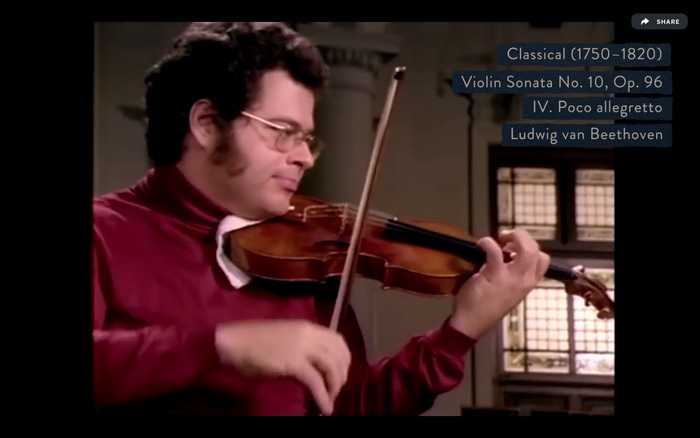
Itzhak Perlman is one of the more familiar faces in classical music. He has played on the world stage countless times. This includes:
- Appearing in the Disney classical music showcase Fantasia 2000
- Playing the famous theme by John Williams for the film Schindler’s List
- Performing at the White House for a Commemorative State Dinner for Queen Elizabeth II in 2007
- Playing at Barack Obama’s Presidential Inauguration Ceremony in 2009
- He even made a guest appearance on The Late Show with Stephen Colbert in 2018
His performing and recording career is just as renowned as his conducting and teaching careers. For decades he has been at the forefront of classical music coaching in the US, including his teaching at The Perlman Music Program (set up by his wife Toby, also a violinist).
He is also well known for teaching at The Juilliard School in New York. A number of his current and former students from The Juilliard are featuring in the Itzhak Perlman Masterclass.
‘I’ve been with music since I was practically born. It’s my language. It’s my life”
Having been diagnosed with polio at the age of 4, his career has always been seen with this in mind. At a young age when he expressed the desire to pursue a career as a violinist, his disability was seen as a barrier.
In this Masterclass, Itzhak demonstrates the necessity to focus on musical expression, not physical attributes. For this reason, this course is not just informative. It is a very personal investment for Itzhak.
Throughout this course it becomes clear that Itzhak Perlman’s mission in life (beyond performing) is to help others who face ‘barriers’ to realise their own musical ambitions.
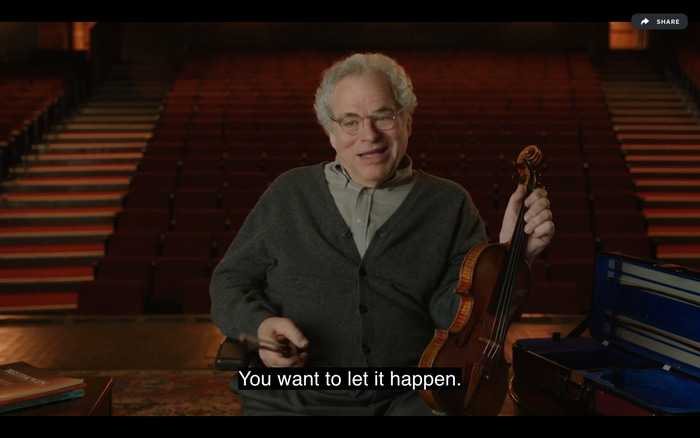
If you haven’t yet seen the trailer for the Itzhak Perlman Masterclass, then check it out here:
About Masterclass
Masterclass is a seemingly endless online resource which gives you intimate access to the world’s most famous and advanced scientists, sportsmen, writers, musicians, chefs, and more.
The platform features courses designed to help you improve your skills, whatever they may be. The courses come with downloadable pdf Workbooks to help you further your studies in your own time.
Learn from people like:
Although Masterclass is not for everyone, if you enjoy learning online from the comfort of your own home, then this might be the perfect addition to your life.
Give it a try and see. You can dip into individual sections of a course, or buy a year-long subscription giving you access to a wide range of courses, from bread baking to basketball.

An inside look into Itzhak Perlman’s Masterclass
Itzhak Perlman’s Masterclass involves 19 very detailed lessons, ranging from 20 minute in depth discussion of bow technique to 5 minute interviews. But most of the lessons are between 10-20 minutes long, often including open discussions with Itzhak’s students.
The Workbook that accompanies the lessons is 55 pages long, and follows the content of the lessons closely. Often it will include recommendations for recordings to listen to, studies and exercises to practice, and more detailed explanations of the ideas that Itzhak introduces.
The lessons are very well structured and guide you through a selection of aspects of playing the violin. These are of course limited to some more fundamental techniques, but nevertheless they are very in depth.
I have split the course into 5 sections to help you understand what this course can help you with:
- Practical Techniques
- Musical Techniques
- Practice
- A Career in Music
- Bonus Content
The lessons sometimes overlap, but I hope this structure makes the course a little less daunting. I certainly found it intimidating at first, but then as lessons began to relate to each other, it became nice and easy to follow. So stick with me…
Section 1/5: Practical Techniques
The course begins with some discussion of Itzhak’s own personal technique. He discusses mostly right hand technique in this section, and demonstrates all of his ideas. Helpfully, there are extra diagrams and explanations given in the Workbook to help.
The Bow
“You want to make sure that everything here is relaxed”
The bow is obviously a fundamental aspect of playing the violin. Without a bow, you’ve basically got a fancy ukelele…
In this lesson, Itzhak Perlman takes you through some bow techniques and explains why these are so important:
- The grip (Russian and Franco-Belgian)
- The wrist
- Producing a good sound
- Point of contact
- Bow speed, direction, and pressure
- The arm
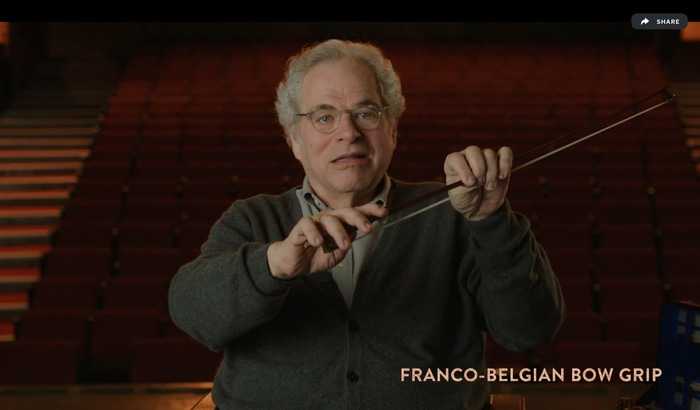
The lesson then dives a bit deeper into how to make a good sound.
“It’s a question of ratio, how much pressure, how much bow speed”
This section of the lesson helped me to consolidate what I had just learnt into one principle: “sound always has a core”. Itzhak showed here how to use all of the techniques discussed in the lesson so far to create a sound that projects, and can really make you sound professional!
“When it doesn’t feel comfortable, there is always a reason”
There are lots of camera angles of his bow technique demonstrations. These really help you to see the details of what he is doing, and how you can do it yourself.
The Workbook has some great diagrams to help you understand what he is talking about too. I thought this lesson was an excellent way to begin learning from a true master of his craft.
Advanced Bowing and Left-Hand Techniques
This lesson is what it says on the tin. A brilliant library of useful information, which dives into more advanced bow strokes and left hand techniques.
“You want to make your bow work for you”
Once again, the Itzhak Perlman Masterclass provides very useful information, demonstrations, and Workbook exercises for you to explore in your own time. In this lesson you learn about:
- Bow Strokes
- Legato, détaché, spiccato, flying spiccato, ricochet, martelé, etc.
- Right and left hand pizzicato
- Playing Positions
In short, you will learn what these things are, how to do them, and why and when to use them.
“Let the bow do it’s thing”
In my opinion, this lesson makes it clear that you need to be able to already play the violin quite comfortably. This definitely feels a step up from the basics that were covered in the last lesson.
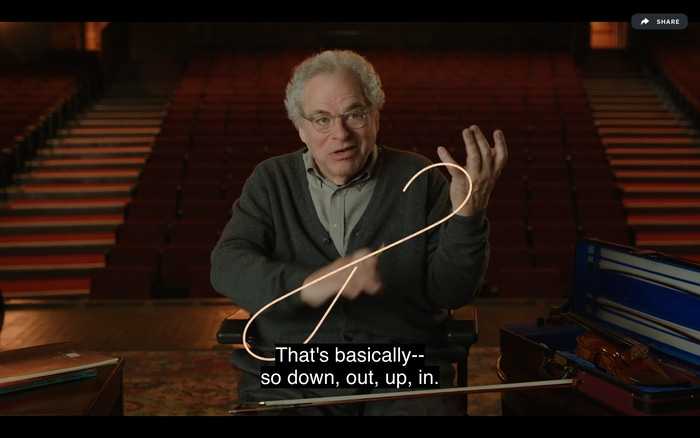
Comfort and Posture
In this lesson we get the first glimpse of discussions with some Iztak’s students. Alongside a brief interview with Iztak about why comfort is so important, the open discussion demonstrates how varied the solutions to being comfortable are.
You will also learn why it’s important to breathe, feel grounded, keep the violin parallel, and what kind of chinrest you might choose.
Section 2/5: Musical Techniques
These lessons feature more of a focus on the left hand, and often discuss how these technical ideas are related to music. There is of course overlap with the previous section, with lots of practical advice mixed up in there too.
Intonation
Another really useful lesson. Here, Itzhak talks through how and why to practice intonation, and why he thinks it is such an important part of music of any kind.
“You’ve got to be obsessed by absolutely playing everything dead in tune”

This includes:
- The 15% rule
- Tuning to a piano
- It’s either sharp or flat
- Know your fingerboard
- Scales are the basics of technique
- Artists to Emulate
“Don’t correct it, just go back”
This lesson was really useful in my opinion, because it is very easy to apply to your own practice and learning.
Vibrato
“Your fingerprint is your vibrato”
There are many, many different kinds of vibrato. In this lesson Itzhak talks through when and why to use different styles of vibrato in different musical settings.
I thought this lesson was pure genius, as it’s his personal take on an integral part of playing that can really help you find your musical voice.
“It’s a tool to express musically certain things”
This is a great lesson to develop your musicality in your playing with practical techniques. Itzhak breaks this down into why and how to apply techniques, and demonstrates these throughout.
“When the vibrato is right, all you hear is the phrase”
Color and Tone
With more demonstrations, Itzhak discusses what makes color and tone important, and how to develop your own use of this in your playing.
“There’s a lot of technique involved in this as to how you produce it”
He breaks down these aspects of the technique involved:
- Using the bow
- Shifting
- Sliding
- Sound and tone
Another brief Q&A with Perlman’s students opens up some other ideas about who to listen to for inspiration, complexity of sound, and energy of tone.
In my opinion, the lesson could do with a bit more playing from Itzhak to demonstrate what he means, but this is another great lesson to help you tangibly advance your playing.
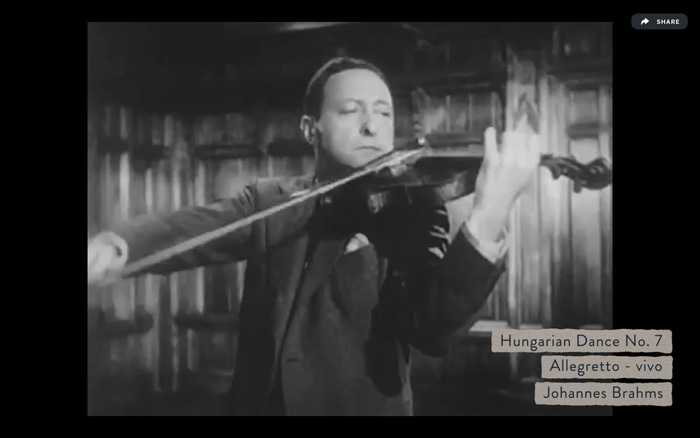
The Color Game
This lesson develops the ideas of colour and tone that has been discussed previously. By playing a game with his current and former students. A student is picked to play their chosen excerpt, they are then given an emotion in secret, and then they perform. The audience then has to decide which emotion they were trying to display.
I loved this lesson, because it showed lots of different opinions in action. Music is inherently subjective, different people like different things. So this lesson was great because you can hear lots of different takes on the broad concepts Iztak has explained.
This made the ideas from the previous lessons a lot more tangible and I felt I could very easily apply this in my own playing, but in my own unique way.
Playing Different Styles
“It’s a very subtle thing”
In this lesson, Itzhak breaks down what playing in different musical styles can be practically. Using selections from Beethoven, Tchaikovsky, and Bach, Itzhak Perlman demonstrates romantic, classical, and baroque styles of playing.
I really enjoyed this lesson, because it involved lots of Itzhak playing. He mentions ideas to discuss before he plays, which means your listening and watching is directed.
“I was sliding on the same string, which is totally acceptable”
The Workbook also helps to expand on what Itzhak describes in his own playing, and gives helpful exercises to explore by listening to recordings.
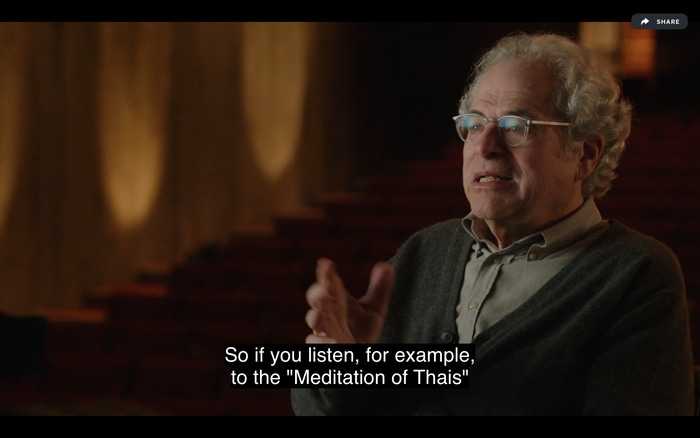
Section 3/5: Practice
Itzhak Perlman is well renowned as a performer and teacher, but here we get some insight into how he practices and how he teachers his students to practice.
Although what he says is not groundbreaking, it’s still the cold hard truth that you have to practice. Coming from an expert like this, it’s clearly worth listening to…
Practice Essentials
This is probably what everybody came here for. Because practice tips from Itzhak Perlman will make you as good as him, right?
Well maybe not, but it’s still great advice!
“Our brain is like a sponge”
If only it was spongey enough to remember to take out the trash…
This lesson covers:
- Practice slowly
- Practice with rhythms
- Études
- Adapt to the difficulty of the music
- How good and bad playing is contagious
“You practice when you need to practice”
Another Q&A session starts with discussing sight reading. Quickly this section starts to sound like a Nike advert…
“Don’t be afraid, just do it”
Another great lesson with demonstrations and a particularly helpful few pages in the Workbook. This involves a lot of useful exercises, some of which as a musician I am quite familiar with. But every so often I need a kick to make me do these exercises, they really do work!
The Three-Hour Practice Schedule
To accompany the previous lesson, this glimpse into Izhak’s tried and tested practice schedule is the cold hard truth of how to improve.
“Why are they so important? They are the basics of violin playing.”
The reason for practicing scales and études quickly becomes clear. These are formulas that are everywhere in the repertoire.
In this lesson, Itzhak discusses why it is so important to practice these things in such a dedicated way. He also includes lots of recommendations for what books to practice with. These are all helpfully detailed in the Workbook.
Helpfully there is a quick discussion of over-practicing. Because everybody wants an excuse not to practice…
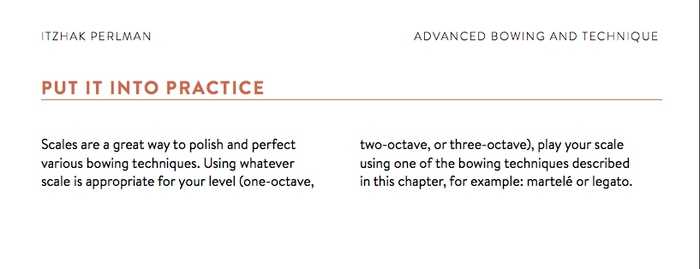
Memorization and Practice Q&A
Some more great advice in this lesson to build upon the practice ideas first mentioned in the last two lessons. These discussions cover topics like:
- Muscle memory
- Always practicing with music
- Nerves and security
- Fingerings and bowings
- Mentally playing the piece
- How practice before a concert
- Practicing for musicality
“You’ve got to practice always as though you are performing musically”
The things discussed in this lesson are common to nearly all musicians, so I’d recommend just having these discussions with others anyway. I had some great chats with friends about this after the lesson!
This lesson was particularly helpful because of the variety of opinions within the group of students. I could relate to lots of different ideas, all of which Itzhak responds to really helpfully. So this lesson gets a big helpful tick from me!
Section 4/5: A Career in Music
Here we get some insight into Itzhak’s career, and he teaches us about how to perform with the realities of sweaty palms and stressing the night before.
This is another great section for all musicians to watch. Discussions about nerves before performing are universal, so I’d recommend these lessons to a wider audience than just violin players.
The Performance Mindset
A vital tool in any musicians toolbox, is knowing how to stay calm on stage. In this lesson you will learn Itzhak’s own methods for learning and performing a piece to a live audience.
“The important thing is, going on stage you don’t want any surprises”
Interviews with Itzhak in this lesson cover areas including:
- Focus
- Delay
- Don’t overdo it
- Judging your own performance
- Performance anxiety
- Connecting with the music
“When you connect with the music, the audience will come to you”
This lesson, like others, featured a few excerpts from old interviews and performances. More Q&As with his students also helps to open up the discussion to individual problems. This section was really relatable, like the discussion of sweaty palms and rushing ahead when you're nervous.
Hilariously, he finishes this lesson with “know thine enemy”! It’s true though…
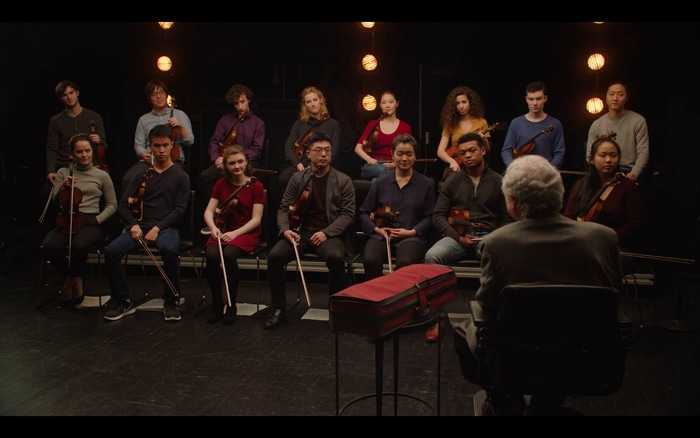
Collaboration
In this lesson you will learn Itzhak’s secrets about playing in collaboration with other musicians. Whether it’s just violin and piano, working with an orchestra, or in a chamber group, there are really helpful tips in this lesson to help you play musically but with confidence.
“You have to be constructive”
Collaborative situations are incredibly fun! So this lesson will really help you get on board with your collaborators in a constructive way. After all, these pieces are normally written for multiple instruments to shine, not just you…
“I’ll show you what it can sound like when a pianist and violinist are not on the same page, so to speak, pun intended”
Once again, Itzhak demonstrates how not to do things, as well as how to do them. These discussions cover things like:
- Balance
- Phrasing
- Timing
- Working with conductors
- Being polite
- Cross genre collaborations
A Career in Music
This lesson digs deeper into the realities of being a musician in the 21st century. Itzhak discusses topics such as:
- The realities of competition
- A variety of paths
- Teaching
“There’s a lot of opportunity to be happy and enjoy what you are doing, and at the same time make a living. What could be better?”
Another student Q&A then open up the idea of conducting, which I found really encouraging. Although this lesson doesn’t have anything groundbreaking, I think it’s still very useful for any musician to hear some of the realities of the world.
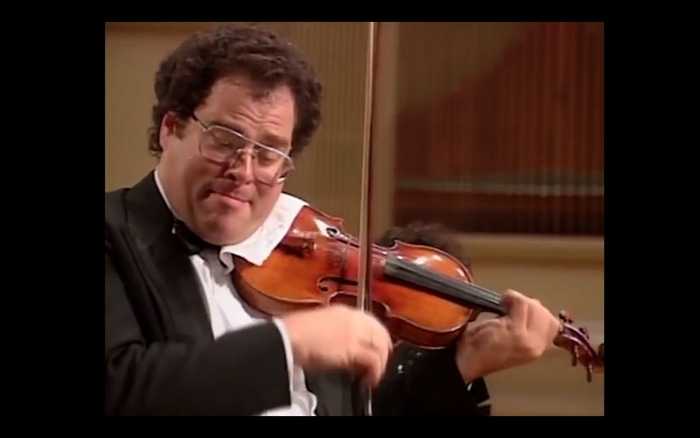
Overcoming Barriers
In this lesson, Itzhak shares his personal story about overcoming his own barriers. He discusses how he had to separate his disability from his musical ability.
“I had to constantly prove that one did not have anything to do with the other.”
This unique content was fascinating to hear alongside all of these other lessons, as it just shows what a phenomenal teacher he is.
Section 5/5: Bonus Content
Bonus Chapter: For Parents and Teachers
Alongside the advice given on this topic in the Workbook, this is a fantastic lesson that really demonstrates the importance of music.
“To feel that when you go to a concert hall you don’t feel lost is a very important part of education”
As a musician myself, I was pleased to hear Itzhak mention how the arts are never given enough time in schools. This is a very important message for parents to hear, so I’d thoroughly recommend checking out the Workbook and Itzhak’s advice on how to respond to this problem.
This lesson also discusses topics like:
- Finding a teacher
- The role of a teacher
- Different styles of teaching
I thought this lesson was actually quite useful for students to watch too. Knowing what your teacher should be contributing is really helpful to know how to make the most of your lessons.
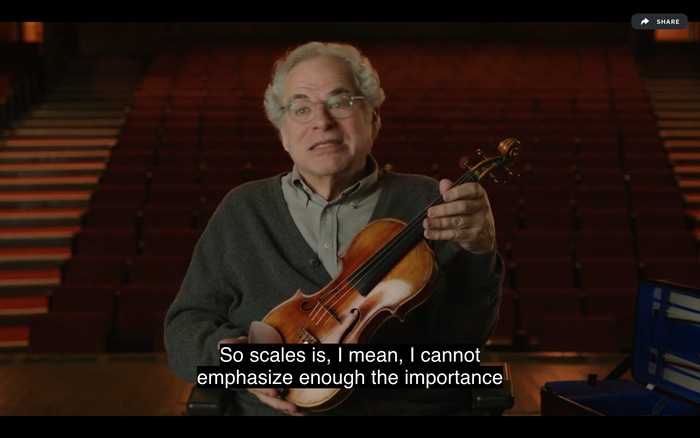
Bonus Chapter: Acquiring a Fine Instrument
In this lesson you will hear all about Itzhak’s own instrument and how to select an instrument yourself. As with many lessons in this course, it was nice to hear that personal preference is a very valuable part of the process.
As well as advice, Itzhak chats about his own very fine 1714 Soil Stradivarius violin. Now this is content you don’t find elsewhere!
Financial tips are also included, like making sure you can get your money back if you sell your instrument. A gem of a lesson, if you can call it that. This informal chat about nerdy instrument things was a lovely way to finish off the course!
What I liked about Itzhak Perlman’s Masterclass
What an Interesting Guy!
As I’ve mentioned before, Itzhak Perlman is a phenomenal violinist. His fame precedes him, having hundreds of recordings out in the world and still being a leading performer and teacher.
But what you don’t get on the stage is an intimate conversation about his childhood, or his thoughts on the state of the music industry today.
The Itzhak Perlman Masterclass features a lot of unique moments where Itzhak discusses things only hinted at in other interviews. For example, there is a whole lesson dedicated to his discussion of his own disabilities and how he wants to be an example for others.
As I watched the course I found the man playing the violin on the screen was not only a great teacher and clearly a fantastic violinist, but an approachable and encouraging person.
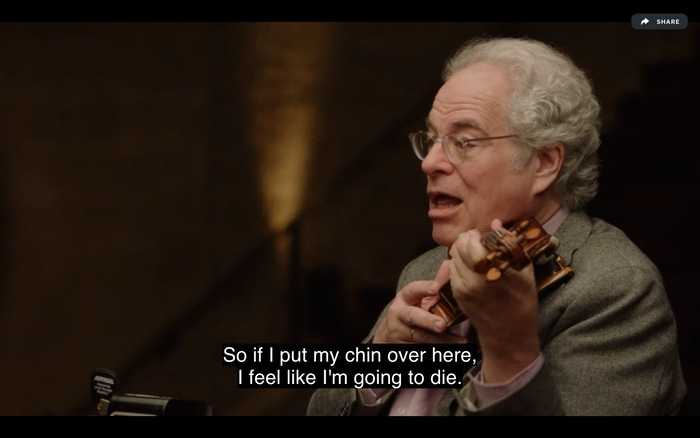
A crucial part of learning is watching somebody else do things. From learning to walk to learning how to shoot your first hoop. Watching and copying is ingrained in our DNA.
Unfortunately many teachers will do a lot of talking, and others will do too much playing. However, in the Itzhak Perlman Masterclass, there is the perfect blend of detailed explanations and repeated demonstrations.
What makes this course particularly unique is the ability to get close ups of Itzhak’s technique. Using lots of different camera angles you get a particularly detailed view of what Itzhak has just explained. A lifeline to those who, like me, find zooming in on tiny videos a real annoyance.
Workbook Recommendations
The Workbook is absolutely packed with really helpful stuff. This includes recordings to go and listen to relating to specific techniques, lists of étude study books, recommended repertoire to work on ideas covered in the course, and ‘Put It Into Practice’ sections. These give you exercises to try out outside of the lessons.
I found that the combination of lessons and Workbook made a very productive way to learn. Especially if you make the most of practicing outside of the lessons.
It’s Always About the Music
As a musician who plays multiple instruments, I find it frustrating when teachers are very narrow minded and only focus on developing technique. A crucial part of being able to teach, is being able to coax out the musicianship in somebody.
Nobody has exactly the same musical voice or physical attributes, both which will affect the way you play. This is not something to be stamped out of somebody, but to be brought to the forefront of their playing.
This whole course always points towards the musician in you. And in my opinion, that is what courses like this should be all about.
Although there is lots of really helpful practical technique for violinists, the Itzhak Perlman Masterclass is just as much a masterclass in how to play music as it is for just the violin.
Master and Students
Throughout the course, in most videos there is a section dedicated to discussing ideas and challenges with a group of Itzhak’s previous students.
This was really valuable, and in my opinion, one of the strongest aspects of this course.
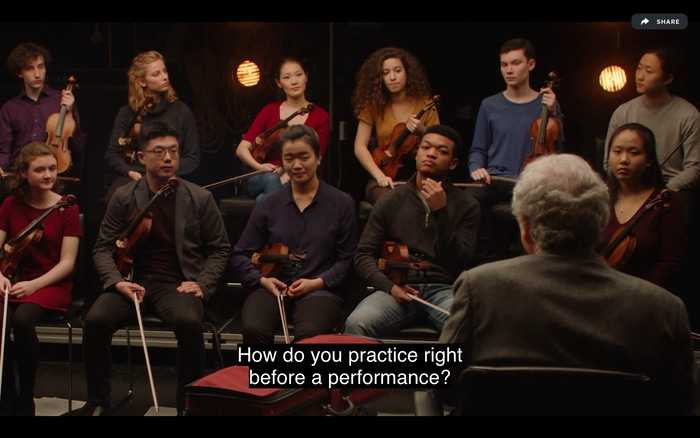
It gives you the opportunity to hear a variety of perspectives on the same problem. Too often, lessons are too focussed on what the teacher has to say, rather than what you have to say.
In the Q&A sections, the students often raised questions I had thought of, giving voice to my opinions and getting really helpful feedback from Itzhak. Where else can you get stuff like that?!
What I think could be improved
Longer Performance Sections
Something I love about some courses I have taken, is the opportunity to just sit back and what exclusive performances. In these you often get to appreciate the lessons you’ve learnt and see them in action.
Unfortunately, the Itzhak Perlman Masterclass doesn’t include many long performances. Throughout the course there are small sections of previous performances that are helpful in this way. But nothing that has the same close-up camera detail seen in the demonstrations in the lessons.
It’s a minor point, but it would definitely help to break up the lessons a bit too.
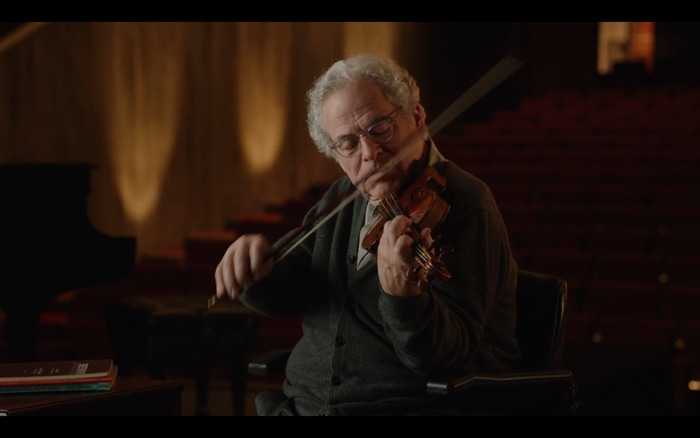
Advanced Terminology
Some of the terminology throughout the course I thought was potentially slightly too advanced for a broad course like this.
When discussing “color” for example, this is a difficult concept to grasp, and although it was given a good amount of attention across three lessons, at first I felt a bit lost as to what they were talking about.
Not Quite What it Says on the Tin
The title of this course implies you can learn the violin from taking the course. If you have got to this point in the review then it should be clear by now that this course is not for total beginners.
Speaking of which…
Who is this course for?
Although you can’t learn the violin from this course alone, this course will be a great help to any violinists of whatever standard (beyond total beginner) to help you develop your technique and musicality.
The Workbook does make it clear that the Itzhak Perlman Masterclass is to be completed alongside in-person lessons, as individual needs will always need different attention.
But this doesn’t mean that you can’t get the most out of it even if you are very advanced.
This course is for the following people who want to improve their technique and musicianship:
- All fans of Itzhak Perlman
- Any string instrument players who want to learn from a true master
- Beginner violinists
- Intermediate violinists
- Advanced violinists
- Any musician who wants to understand how the violin works
- This includes aspiring composers and conductors
Some parts of this course are more adaptable to other instrumentalists than others. But I would definitely encourage any musician interested to check out the sections about Practice and A Career in Music. They include universal concepts that apply to every musician on the planet!
For violinists specifically, if a total novice was Level 1 and a professional was Level 10, I would recommend this course for Levels 3-8 of players.
How much does the course cost?
At the time of writing MasterClass had three subscription offers. The cost of these (per month) is:
- Individual (1 user) $10
- Duo (2 users) $15
- Family (6 users) $20
All are billed annually, which at first glance may seem pricey.
However, you can considerably reduce your costs by joining with friends or family. And of course by taking as many courses as possible.
With around 200 courses on the platform you’re likely to find quite a few to interest you. Even if you buy an individual membership and find only 10% of the courses of interest this works out to only $6 a course:
$120 (annual individual membership fee) / 20 courses = $6.
And if you join with friends or family then the cost of each course is drastically reduced. Check out our MasterClass review or MasterClass cost articles to see how.
Bearing in mind that these classes are taught by global leaders in their fields the value is unbeatable. You can pay over $100 for an online course taught by someone you’ve never even heard of, never mind someone of van Burren's calibre.
What’s more, MasterClass also offers a 30 day refund if you’re unhappy with your purchase.
You can also purchase MasterClass as a gift.
Alternatives to Itzhak Perlman’s Masterclass
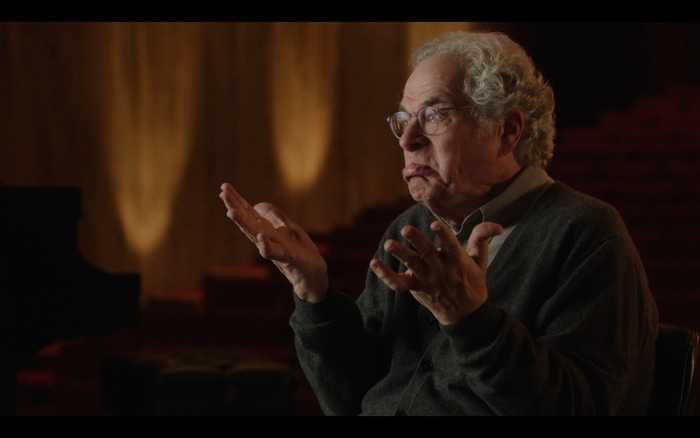
The Itzhak Perlman Masterclass is not the only one of its kind. As well as many other music courses on Masterclass, there are countless online courses for learning the violin. They vary in quality, and unfortunately most of them are not taught by renowned musicians like Itzhak Perlman.
However, I have researched and tested the options you have for your benefit. So here we go.
Your main two options are learning online, which is typically cheaper and less good quality, or getting a teacher, which is typically more expensive but not necessarily better quality.
Here are some options for you to consider:
- Udemy offers a range of courses, including ‘Beginner Violin Lessons’, which features a solid grounding in basic technique and the principles of music. This course costs around $15 at the time of writing.
- This course is not taught by an expert of Itzhak’s standard, therefore the quality of the teaching is not as detailed.
- However, unlike the Itzhak Perlman Masterclass you can learn how to play the violin from courses like this.
- These online courses often focus on individual aspects of playing, like ‘Complete Vibrato Mastery’. This can be great if you only want to focus on one aspect of playing, but the quality of the technique is less solid usually.
- There are many ways to play the violin, Itzhak makes that clear throughout his Masterclass. However, online courses often only give you one perspective (often not professionally assured, it could be anyone teaching you!). Learning from a world renowned master is a unique opportunity.
- As well as learning platforms like Udemy, there are many dedicated violin learning companies like Trala and Violinspiration that offer online lessons. These are great for beginners. However, these have the same problems as online courses: no guarantee of world class quality.
Itzhak mentions at the beginning of the course that his Masterclass is to be used alongside lessons in person. I completely agree with this. I don’t think it is possible to learn effectively and efficiently without a teacher in person.
Of course, this Masterclass is not an essential addition to lessons, but if you are wanting a different method of learning to improve your playing in unexpected ways, then this course offers exactly that.
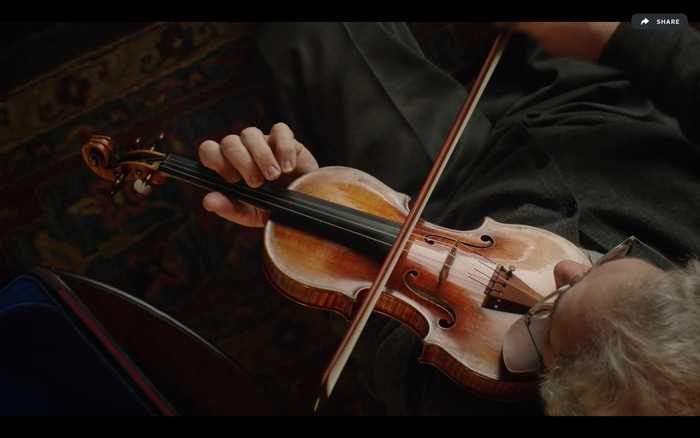
Alternatives on MasterClass
These include:
- Yo-Yo Ma
- Hans Zimmer
- Ringo Starr
- Herbie Hancock
- Jake Shimabukuro
- Mariah Carey
- deadmau5
- Timbaland
- Tom Morello
- Armin van Buuren
- Christina Aguilera
- St Vincent
And if you want to also master a different instrument, like piano, we can recommend Pianote, Skoove, Playground Sessions or Flowkey
Itzhak Perlman Masterclass: what others have said
To provide you with a balanced review, I have read reviews of the Itzhak Perlman Masterclass written by other people. There is a variety of opinions, both positive and negative.
Some reviews make it clear that the course content isn’t ground breaking. After all there is a fair amount of overlap with other online beginner courses.
“Most of it is very basic: how to hold the bow, posture, different bow strokes, tuning, etc. So if you are intermediate and higher, there's not much in there that you don't know already”
I have to agree with this. The content can be simple, but that’s why Masterclass delivers content via world renowned artists.
Although, the course might feel basic to very advanced players, the course is deliberately broad. Other reviewers feel this is a strong point:
“Wow. I can’t even describe how amazing it is to get such in depth info on the violin from such a legend. This is a very thorough and well thought out class. It covers everything - technique, musicality, practice routines, mindset, performance, etc.”
My overall feelings are summed up nicely, by this Reddit user:
“If you can buy it, you should. He's a genius.”
Itzhak Perlman is Itzhak Perlman. Any intimate lesson with someone of this calibre is worth paying attention to. Although it may be broad, I think there is a solid amount of depth for each topic. Overall, he’s a genius, and brilliant teacher.
How long it took to complete the course
It took me only around a week to complete this course. However, I would recommend to get the most out of it you should do a lesson every few days, in between lessons with a teacher.
By spending a few weeks on the course, you will be able to fully invest in the tips and exercises that Itzhak recommends in each lesson. By practising and spending time on the topics discussed you will quickly find this course is worth the cost.
For beginners, it might even be worth rewatching some lessons a few times, to truly dig deep into the ideas being discussed.
I found some lessons harder to absorb than others so I had to spend some time studying in my own time before moving on. Every musician is different so this will look different for everyone, but most people should be able to complete the course within two to three weeks.
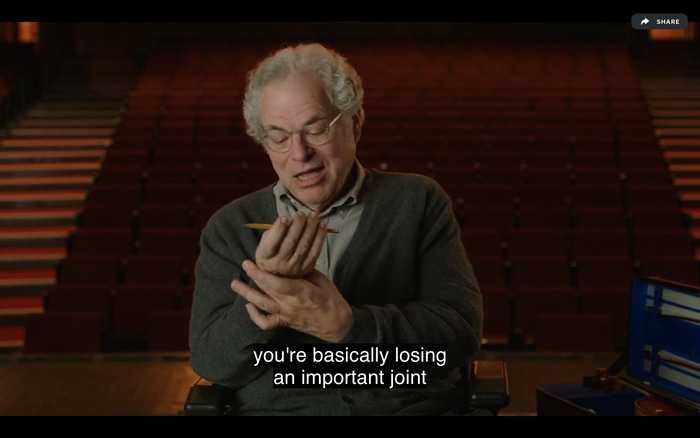
Is the course content unique?
As discussed previously, the answer to this isno, not all of the techniques taught are unique to this course.
Violin can be taught in so many ways, and there are a lot of variations in technique. But the general principles of playing the violin do not change.
This course covers the basics just like many other courses out there.
However, there are no other courses of this length and depth (even if some of the concepts are basic) that are taught by such a well recognised violinist.
This course is a carefully curated list of the techniques Perlman belives to be the most important And you’re going to hear his viewpoint and get his unique perspective on them.
Also, Itzhak Perlman is not just a performer, he has spent his life educating. This means he is very good at it. Some courses out there are not engaging or inspiring. Itzhak’s many stories and encouraging manner make this course a pleasure to take.
So to recap, the course content is not completely unique. But it is presented (along with the Workbook) in a effective way, making the format of the course and Itzhak’s moments of golden advice a unique selling point.
Is Itzhak Perlman’s Masterclass worth it?
In my opinion, yes.
You won’t suddenly become Itzhak Perlman by taking this course unfortunately.
But through studying the advice he gives and carefully going through the Workbook alongside the video lessons, you WILL improve.
This course helped me to put my musicality into my playing. Also, by listening to all of the suggested recordings I became familiar with a huge amount of repertoire.
My practise regime has turned upside down, and I’m finding I can learn pieces much faster and with more musicality in my sound.
Perlman has definitely changed my playing for the better, and anything that can do that for almost any violinist is surely worth it.
And with the ability to get a refund if you’re unhappy with your purchase, what do you have to lose!
Just remember that with the All-access pass you can take all of the classes on the platform, so to get the best value take as many that interest you!
Frequently asked questions
A MasterClass all-access-pass costs $120 a year ($10 a month). This gives you access to Itzhak Perlman’s Masterclass, alongside 190+ other courses.
Itzhak Perlman’s Masterclass is 4 hours and 13 minutes long and consists of 19 videos divided into 5 sections.
Unfortunately you cannot get the Itzhak Perlman Masterclass for free. But MasterClass has a range of purchasing options and offers refunds if you’re not happy.
Yes, MasterClass operates a 30 day refund policy if you purchase directly through them. If you purchase through other providers, their returns policy may apply.

Matt is a recent Music Graduate of Oxford University. He now splits his time between freelance jazz drumming, enjoying the outdoors, and cycling. In between these, Matt loves to learn about how the world works.



I saw him at Walt Disney Concert Hall in LA on Sunday April 24 with Rohan de Silva and found Itzhak still as great as ever.I played violin in high school and look forward to taking his class.I am 74 years old and amazed by his dexterity at 77!
I own a violin but plan to get a new bow before I start.
That’s amazing, Michael. You might also like Herbie Hancock’s MasterClass. It’s worth checking out. Good luck
I think this is one of the so much vital info for me. And i’m happy studying your article. However should observation on some normal issues, The web site style is ideal, the articles is really excellent : D. Just right task, cheers
Thank you so much! 😊 I really appreciate your kind words and feedback. Glad you found the article valuable! If you have any suggestions for improvements, feel free to share. Cheers! 🎉